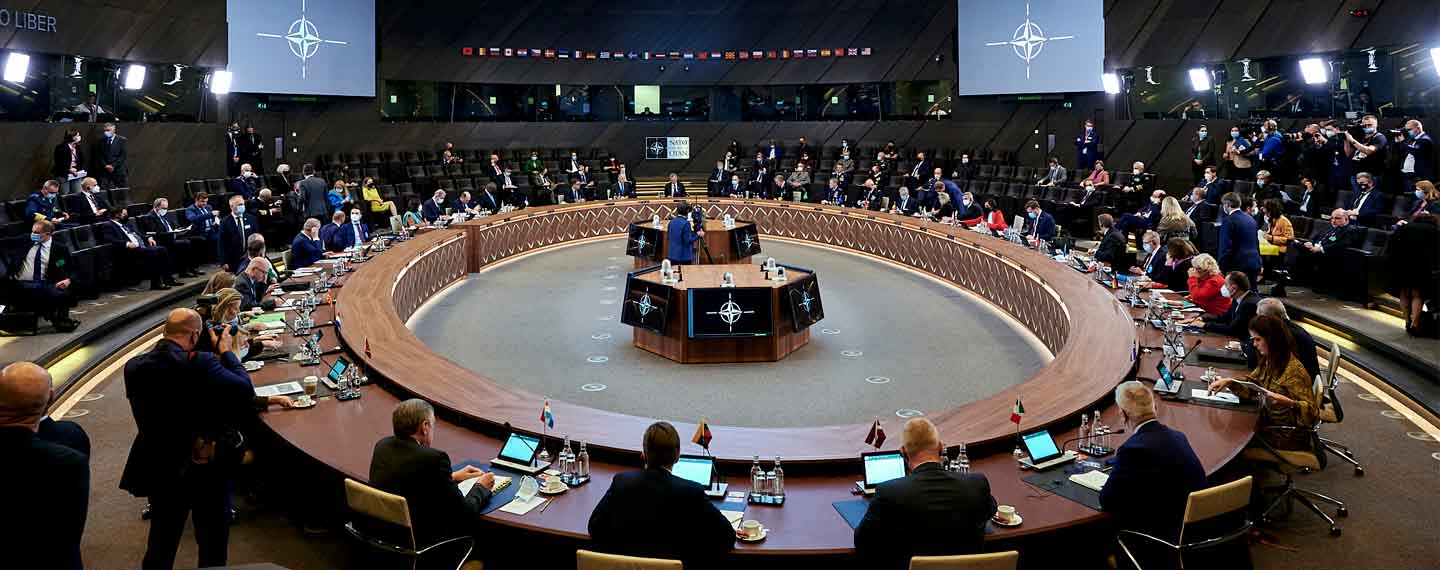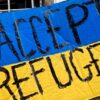We are in a paradoxical situation. The EU has made significant headway on its unification and capabilities in recent times, while simultaneously lashing itself tighter to the mast of US might. In geopolitical terms, Emmanuel Macron and Olaf Scholz have retained channels of dialogue with Vladimir Putin, but the latter has made it clear to them that the person setting the course of Western policy is ‘the other one’ (the US President, Joe Biden).
The EU has made giant strides with the pandemic (with a major European recovery fund, and vaccine purchases coordinated by Brussels). It has reacted robustly to the war in Ukraine (with the rapid imposition of sanctions against Russia, coordinated military aid for the country under assault and the housing of millions of refugees in a matter of weeks). It has devised a Strategic Compass, no easy task for 27 members. The birth can in fact be announced of the ‘geopolitical Europe’ that the current European Commission has been yearning for since it was installed in Brussels at the end of 2019. The foundations have been laid for EU-based security, but defence continues to rely on a US-led NATO. The EU is greater than it was, but also less in relative terms because some of the demands have grown. The war has led to a rising tide of security and defence.
The concept of strategic European autonomy, let alone sovereignty, will now have to be reviewed. This includes technological and digital autonomy. In this context, the EU wants to reduce its dependency on foreign silicon chips, for example, especially given the disruption to supply chains stemming from the effects of the pandemic and the increased demand for these crucial components from burgeoning digitisation. European programmes to address the problem are afoot. The European Commission has submitted a Chips Act. There are Important Projects of Common European Interest (IPCEIs) covering microelectronics and semiconductors. Spain has launched a national Strategic Project for Economic Recovery and Transformation (PERTE) covering chips and semiconductors, drawing on European funds. But the first major European step was to invite the US Intel corporation to open a microprocessor factory in Germany (with ramifications for other member states). The domination of the giant US tech companies, in addition to the Chinese, is manifest. Europe creates regulations, but not yet real alternatives; although it remains to be seen how the ‘European digital decade’, launched by Brussels with the enthusiastic support of the member states, plays out.
It is often said that the EU advances by dint of crises, but it is not entirely true. As Jeremy Shapiro of the ECFR has pointed out, in 2008, the combined economy of the EU and the UK was similar to that of the US: US$16.2 trillion compared with US$14.7 trillion. In 2020, the US economy was already one third larger. The 2008 crisis and the EU’s faltering response to it underlies this trend. Although the plans drawn up in Brussels seek to make up this lost ground, the fallout from the war may cause such divergences to widen, because the US is better placed in economic and fuel terms (it is a net exporter of oil and gas, an area where European dependency on its US partner is also growing). A range of forecasts suggest that the impact of this war will be greater on the EU than the US.
Moreover, US military spending rose during this period, while that of the EU plus the UK went down, although it started to grow again after 2014 (the occupation of Crimea) and an increase has now been agreed to ensure that in a few years the magic (and arbitrary) figure of 2% of GDP will be attained. While Putin was systematically improving Russia’s armed forces, Europe was disarming. The defence spending of the 27 is nevertheless four times greater than that of Russia, and equivalent to that of China, although the outcome on the ground is reduced owing to the duplication of resources and a lack of interoperability. It is true that the Europeans have to spend more, but above all to spend better, in a more integrated way, which will require overcoming or reconciling the varying perceptions of the threats and a common industrial military policy. There can be no strategic autonomy or sovereignty without a homegrown military industrial base. Headway has been made in this regard, such as the European Defence Fund, but it has been hesitant. And Germany’s first decision following its announced hike in defence spending was an order for US F35s to renew its ageing fleet of fighter jets. This adds to the paradox.
Things may change. Indeed, a change to the strategic culture is already evident. The EU has decided to set up a rapid deployment force of 5,000 troops, although its operational capability (even more modest projects have stalled) and its effectiveness, beyond helping to arrange evacuations at times of crisis, remain to be seen. It is not a matter of creating a ‘European army’ or competing with NATO, but rather of enabling the Europeans to act without the US or the Atlantic Alliance. The Strategic Compass makes specific proposals, with a reasonably precise calendar for implementation, to improve the EU’s ability to act decisively in crises and defend its security and that of its citizens. If this is achieved, in a few years the EU will have been transformed. This includes Denmark, which on 1 June is set to hold a referendum on giving up its opt-outs from the Common Security and Defence Policy. It will not be at the expense of NATO, particularly in light of the possible admission to NATO of Sweden and Finland, two EU members who may view their membership more in consonance with the European dimension of the Atlantic Alliance, without ever being absolute.
Another significant element, another paradox, or part of the same one, is that a few days before the Russian invasion of Ukraine began, France announced its military withdrawal from Mali within four to six months, whereas Russia has increased its presence in the region, and Africa has become a place of crucial competition in the confrontation between the West and is geopolitical rivals, first and foremost China.
In the context of security and defence, and more so following Putin and Medvedev’s warnings, there is the central and strategic question of nuclear weapons, and a protective shield for Europe that is now much more reliant on the US than France, the EU’s only remaining nuclear power following Brexit.
The EU is moving full steam ahead; recognising a juncture of geopolitical importance, it has started to speak the ‘language of power’ (as its High Representative, Josep Borrell, calls it), and seeks instead of following the US unconditionally to act on its own account. This is particularly the case when the future direction of the US is uncertain amid its forthcoming legislative and presidential elections. If the EU implements everything that has been proposed in the foreign policy, security, digital, environmental and economic realms it will transform itself. But the world is changing at a greater speed and the US is moving faster. The paradoxical result: more dependence; and within a global process of de-Westernisation and de-Europeanisation.
Image: NATO Defence Ministers discuss Russia, Ukraine and nuclear safety. Photo: NATO.



